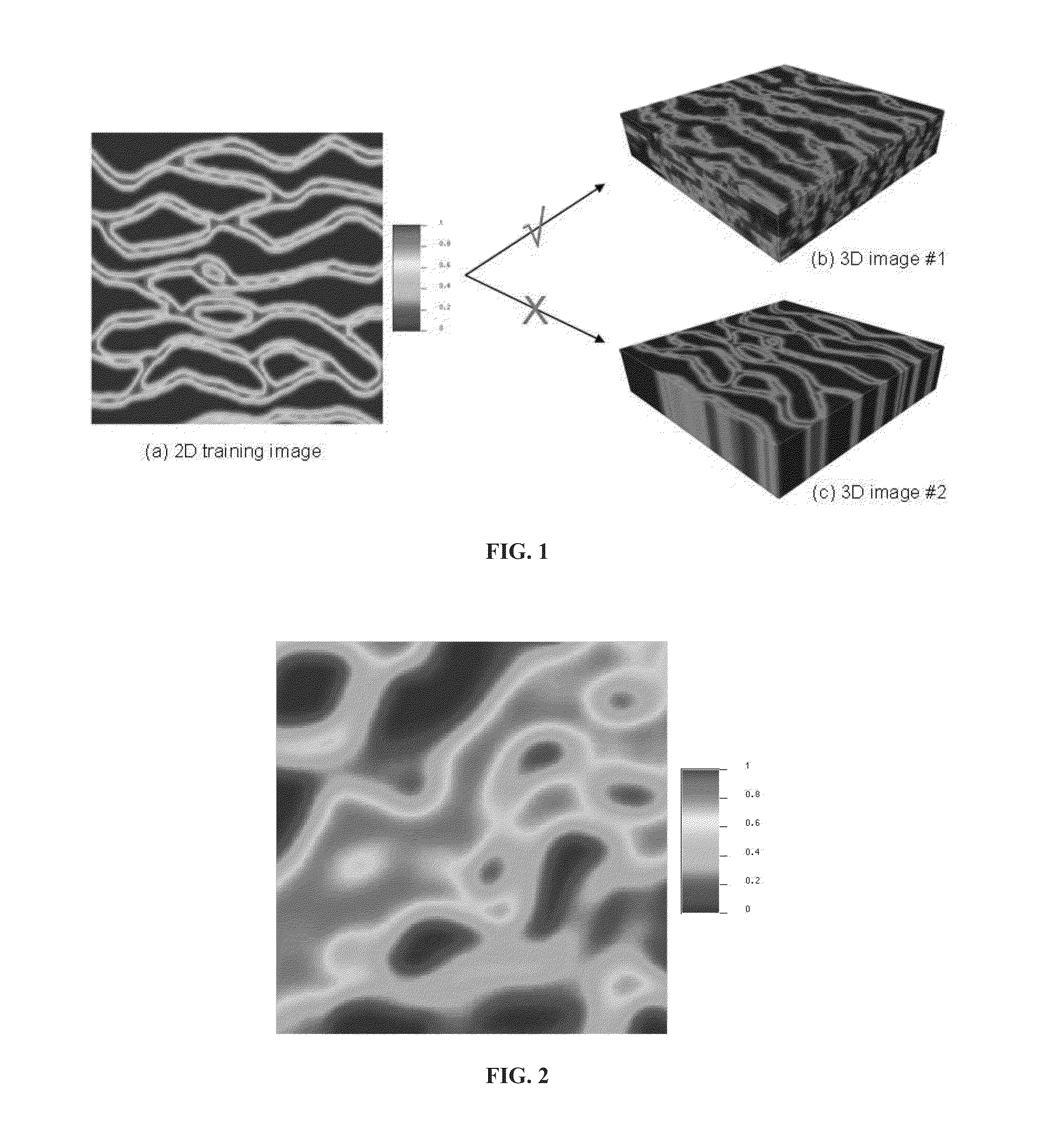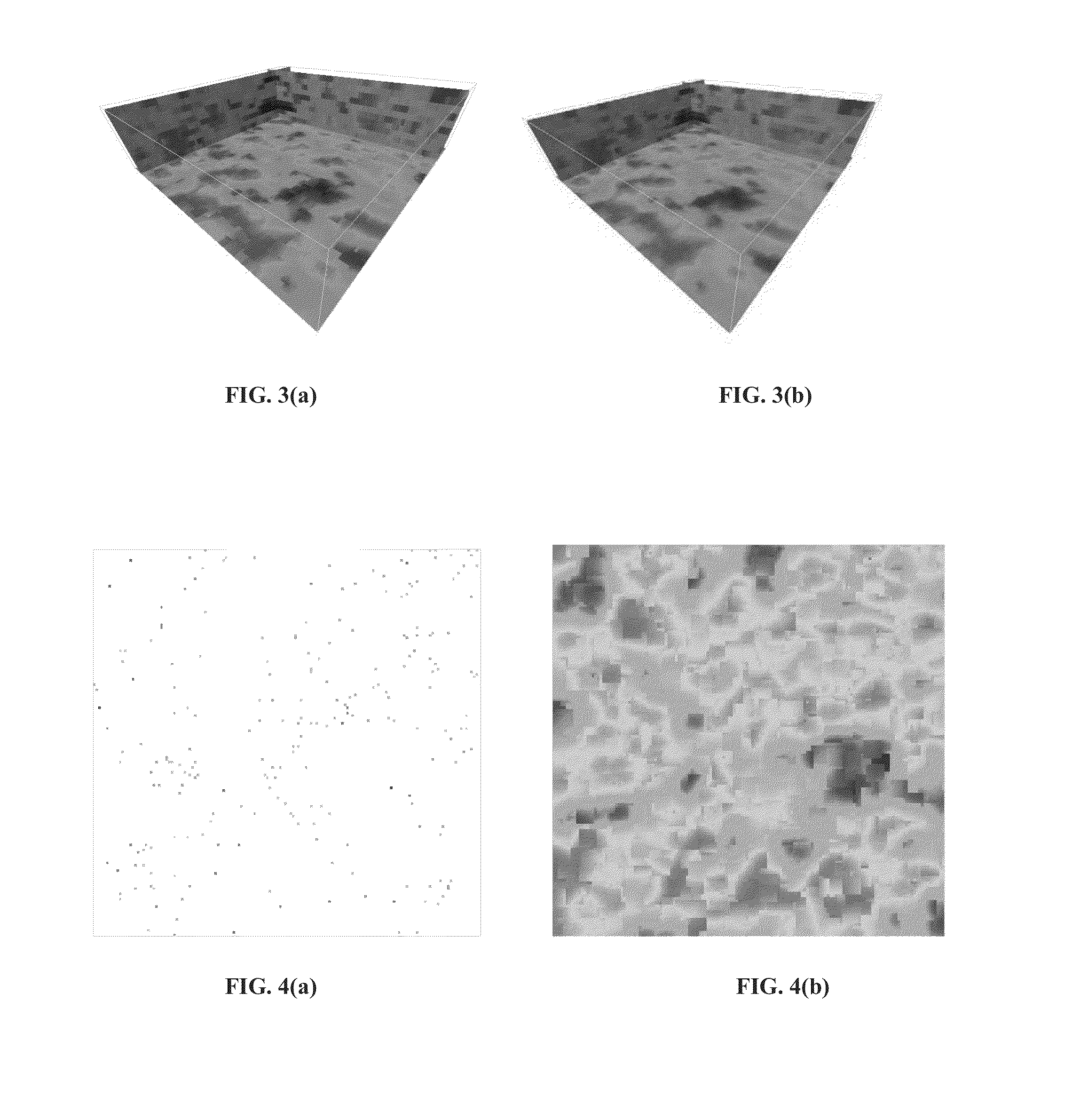Method for modeling a reservoir using 3D multiple-point simulations with 2d training images
a reservoir and multiple-point simulation technology, applied in the field of reservoir modeling, can solve the problems of insufficient geological features, histogram and variogram, and algorithm only reproducing up to 2-point statistics, and iterative process creating problems,
- Summary
- Abstract
- Description
- Claims
- Application Information
AI Technical Summary
Benefits of technology
Problems solved by technology
Method used
Image
Examples
example
[0074]A four facies training image in FIG. 16 was used to simulate the distribution of channels, levees and ellipse drops in the mud background. The simulation grid was 200×200×10 in size. Each 2D SNESIM simulation was run with a radial search template containing 60 nodes and five multiple grids. During the simulation, ⅓ of the identified geo-bodies were removed from the conditioning data list.
[0075]One final 3D realization using the method is depicted in FIG. 17(a), which shows good vertical connectivity's for all foreground facies with some variations from one layer to another as seen from the different thicknesses of the geo-objects. For comparison, FIG. 17(b) gives one SNESIM realization simulated directly with the 2D TI, which depicts the strong layering effect as seen from the poor vertical continuities of the simulated geo-objects.
Variables
[0076]G=3D grid
[0077]N=cell dimension
[0078]k=layer index
[0079]n=number of sample
[0080]r=regular grid
[0081]int=interval
PUM
 Login to View More
Login to View More Abstract
Description
Claims
Application Information
 Login to View More
Login to View More - R&D
- Intellectual Property
- Life Sciences
- Materials
- Tech Scout
- Unparalleled Data Quality
- Higher Quality Content
- 60% Fewer Hallucinations
Browse by: Latest US Patents, China's latest patents, Technical Efficacy Thesaurus, Application Domain, Technology Topic, Popular Technical Reports.
© 2025 PatSnap. All rights reserved.Legal|Privacy policy|Modern Slavery Act Transparency Statement|Sitemap|About US| Contact US: help@patsnap.com



